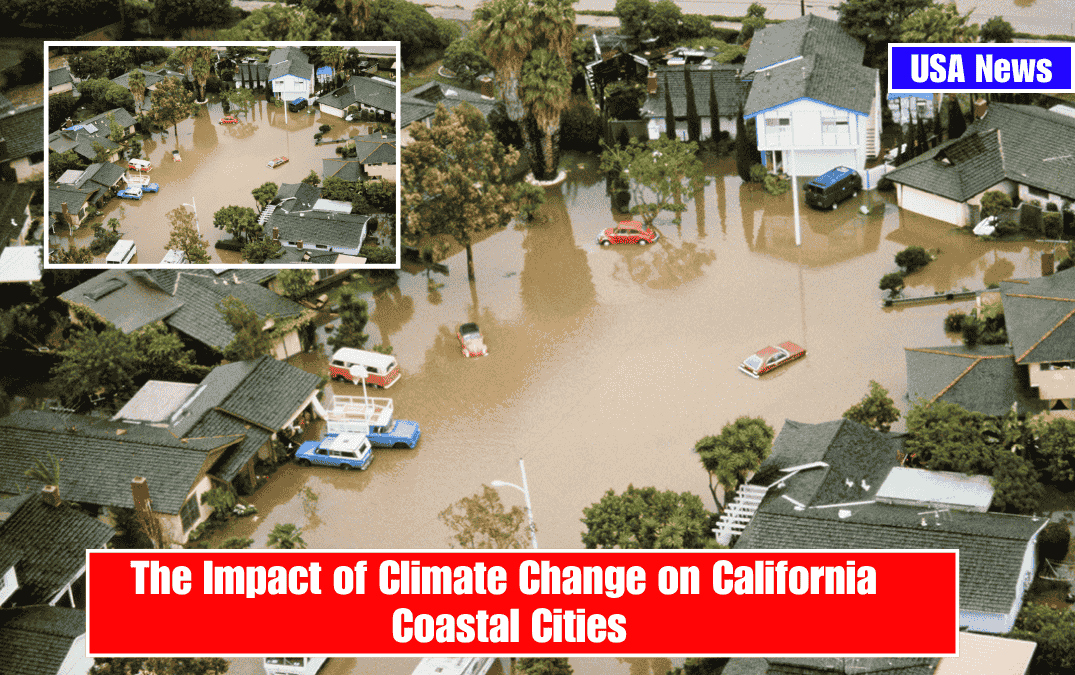Rising sea levels, intensified storms, and coastal erosion are transforming California’s shoreline, threatening infrastructure, ecosystems, and communities. With over 1,200 miles of coastline, the state faces existential challenges from climate change, including projected beach losses of up to 70% by 2100 and $10 billion in property risks. These impacts disproportionately affect vulnerable populations while demanding urgent adaptation strategies.
Sea Level Rise and Land Subsidence
California’s coast has experienced 8 inches of sea level rise since 1900, with projections reaching 6.6 feet by 2100 under high-emission scenarios. Compounding this threat, parts of Los Angeles, San Francisco, and San Diego are sinking due to groundwater extraction and tectonic activity—a process called subsidence that accelerates flooding risks.
In the Central Valley, some areas subside up to 8 inches annually. This dual crisis of rising waters and sinking land could expose 29,000 people in San Mateo County alone to severe flooding by 2050.
Coastal Erosion and Habitat Loss
Beaches face a “coastal squeeze” as rising seas collide with urban infrastructure, blocking natural inland migration. Studies suggest 50% of California’s beaches could vanish with 1 meter of sea level rise. Critical ecosystems are also at risk:
- Tidal wetlands: 90% already lost to development face further inundation
- Kelp forests and seagrass: Threatened by warmer waters and shifting depths
- Western snowy plovers: Nesting habitats eroding in erosion hotspots
Sediment shortages from dammed rivers exacerbate these losses, reducing the sand supply to beaches by 23%.
Flooding and Storm Impacts
While climate change may not increase storm frequency, higher sea levels amplify damage. Redwood City—California’s most flood-prone city—has 27% of its population (22,000 people) in 100-year flood zones. Storm surges now reach farther inland, with future flood risks projected to increase 80-fold by 2100.
Low-income communities, including those with median incomes under $60,000, face disproportionate risks due to limited adaptation resources.
Economic and Social Costs
- Property threats: $8–10 billion in coastal assets could be submerged by 2050
- Beach tourism: At risk of losing $4 billion annually in recreational value
- Infrastructure: 700 km of roads and San Francisco International Airport face flooding
Adaptation Strategies
California is exploring multi-pronged solutions:
- Comanagement frameworks: Integrating stakeholders across governance levels
- Beach nourishment and breakwaters: Costly but effective for erosion control
- Wetland restoration: Bolstering natural buffers against storms
- Managed retreat: Relocating vulnerable communities inland
As Dan Cayan, a Scripps Institution climate researcher, notes: “The degree of climate change is essentially a set of choices global society is making”. With coordinated action, California’s coastal resilience can be preserved, but the window for effective intervention is narrowing rapidly.
SOURCES:-
[1] https://explorebeaches.msi.ucsb.edu/effects-climate-change
[2] https://pubmed.ncbi.nlm.nih.gov/39074269/
[3] https://www.sfchronicle.com/weather/article/redwood-city-sea-level-flood-20253300.php
[4] https://www.pnas.org/doi/10.1073/pnas.2310077121
[5] https://theweek.com/environment/california-sinking-sea-level-climate-change








![[1] https://matrackinc.com/dash-cam-laws-by-states/ [2] https://www.reddit.com/r/Seattle/comments/28qqlg/dash_camera_are_they_legal_for_private_citizens/ [3] https://www.colburnlaw.com/washington-state-dash-cam-laws/ [4] https://70mai.store/blogs/news/is-it-legal-to-record-audio-and-video-with-a-dash-cam [5] https://www.nwinjurylawcenter.com/how-can-dashcam-footage-be-used-in-a-car-accident-claim/](https://www.pickawaycultivator.com/wp-content/uploads/2025/04/Understanding-Dash-Cam-Regulations-in-Washington-.png)
